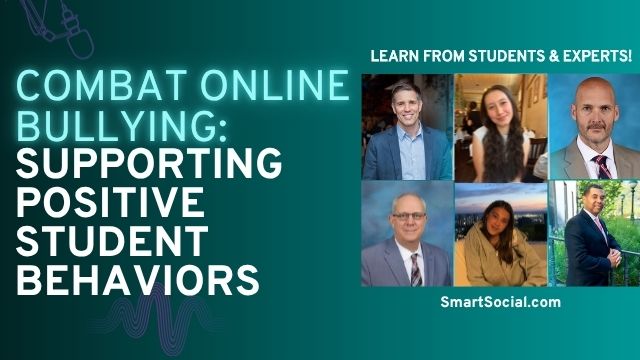9 Ways Students Can Avoid Oversharing Online
Green Zone App
(Click here to learn more)
Dangerous Social media challenge
(Click here to learn more)
Red Zone App
(Click here to learn more)
Gray Zone App
(Click here to learn more)

When teens first start gaining access to social media, one of the most common mistakes they make is oversharing online. Without a solid understanding of what is and is not appropriate to post, they are at risk of posting something that could have a negative impact on their reputation or even put them at risk. Parents and educators need to make sure that children are equipped to make good decisions online.
How can you make sure your students know what to post on social media before they ever get access to it?Talk to them about it! To help, we’ve created 5 ways students can avoid oversharing online and on social media.
9 Ways to Help Your Teen Avoid Oversharing Online
When teens first start using social media, one of the most common mistakes they make is oversharing. Without a clear sense of what is and isn’t appropriate to post, they risk damaging their reputation or even compromising their safety. Parents and educators can help by teaching kids how to make thoughtful, responsible choices before they ever get access to social media.
To help, here are 9 ways to guide your student to avoid oversharing online and on social media.
1. Always Think of Safety
Some details are never safe to share online—starting with your child’s home address. If they’re hosting an event, encourage them to share the location privately rather than posting it publicly (and it should never appear in their profile).
Be cautious about social media “check-ins,” too. While sharing their location can seem fun, it can also reveal their routines to people they don’t know. The same goes for phone numbers—they should be shared only with close friends. Apps like Instagram or Discord allow kids to message or talk with friends without giving out personal contact information.
2. Think Before Posting Emotional Content
It’s normal for teens to want to share emotions online, but posting when upset or angry can backfire. Once something is out there, they can’t control who sees it—or how others might use it.
Sharing too much about a breakup, a fight, or a bad day can make them a target for teasing or even draw unwanted attention from adults who look for vulnerable kids online. If they’re upset, it’s better to wait before posting—if they decide to post at all. Encourage them to sleep on it or talk to a friend instead. What feels huge tonight may seem much smaller tomorrow.
3. Keep It Positive
In a social-media-centric world, posting thoughts or opinions can feel as natural as talking with friends—but it’s not the same. If your teen attends an event that’s disappointing or wants to vent about a class, posting those complaints publicly can make them seem negative and even hurt someone’s feelings (like an event organizer or teacher who might see the post).
Remind your teen that staying positive online not only reflects better on them but also prevents problems they didn’t anticipate.
4. Keep Accounts Private—and Curate Connections
Most apps allow users to adjust privacy settings so only approved followers can see their posts. But even private accounts have public elements. For instance, a private Instagram user’s profile photo and username are still visible, and any comments they make on public content can be seen by anyone.
Sit down with your teen and review their privacy settings together, but remind them that no privacy setting replaces good judgment. Even private posts can be screenshotted or shared.
It’s also worth discussing who they connect with. Many new users accept every friend request or follow everyone they know. Encourage your teen to be selective—connecting only with people they truly know and trust. Some people judge others by who they follow, and connecting with the wrong accounts can reflect poorly on your teen or even expose them to safety risks.
5. Know When to Go Public
When students begin applying to colleges, internships, or jobs, they might want to make parts of their social media public. This can be a great opportunity to showcase positive, authentic content that highlights their character, interests, and accomplishments.
Encourage them to fill their feed with posts they’re proud to share—volunteer activities, hobbies, or creative projects. The key is to show gratitude for opportunities rather than coming across as self-congratulatory.
That way, when adults are making decisions that could impact their future, they’ll see your teen at their best.
6. Encourage Your Teen to Search for Themselves Online
This is a free and highly effective way for teens to understand what kind of impression they’re making online. Ask your teen to Google their name and see what appears. Are they happy with what they find?
They may discover old posts, photos, or groups that no longer represent who they are. Now’s the time to remove or leave those spaces. While nothing online ever disappears completely, cleaning up old content can make positive content easier to find.
If the best version of your teen isn’t showing up near the top, they can consciously post more positive content to push older or less flattering results farther down.
7. Know When to Post—and When to Message Privately
When teens want to share something exciting or meaningful, it can be tempting to post it for everyone to see. But not every thought or experience needs to be public.
Encourage them to ask: Is this better shared in a private message or text? Public posts often lead to a cycle of checking and rechecking for likes or comments, which can fuel anxiety and disappointment if their post doesn’t get the reaction they hoped for.
Private conversations are underrated these days. Suggest that your teen share personal thoughts or niche interests directly with a friend who will appreciate them—rather than with the entire internet.
8. Be Cautious with Third-Party Apps and Quizzes
Many “fun” quizzes or mini-games on social media ask for access to a user’s profile or friends list. While some are harmless, others can collect personal data or even attempt phishing. Teens who tend to overshare are especially at risk.
Teach your teen to pause before granting access to their social media accounts or sharing personal details with any third-party app.
9. Remember: It Only Takes One Data Breach
Before sharing anything, remind your teen that anyone working for a social media platform can technically access user data—including photos, private messages, and contact information.
We’re all just one data breach away from having personal information exposed to the public. Encourage your teen to treat every post, message, or photo as something that could one day become public—and to post accordingly.
Conclusion
Oversharing can happen easily and innocently, especially when teens are new to social media. By talking openly and regularly about what’s safe and what’s not, you can help your teen build good habits that protect their privacy, safety, and reputation—while still allowing them to enjoy the positive side of being online.
Would you like me to make this version slightly more SEO-optimized (for example, adding keywords like “social media safety tips for parents” or “how to talk to your teen about oversharing online”)? It would help boost discoverability if this is going on a blog.
Additional Resources:
Instagram Map: Protecting Teen Privacy Online
Online Predators & Teen Privacy: Dangers of Too Much Online Freedom
How TikTok's Algorithm Targets Vulnerable Teens: 5-Step Safety Checklist
10 Instagram & Snaptchat Safety Tips for Families

Conclusion
The content you post on social media is tied to your digital footprint. Educating students about the risks of oversharing and the importance of maintaining a positive online presence is essential. Regular discussions about oversharing, digital etiquette, privacy, and the impact of social media on personal and future professional lives can empower teens to make informed and responsible choices.
Protect your family and enter for a chance to win cool prizes
Become a member or log in to learn more on this topic
Protect your family and enter for a chance to win cool prizes

., start learning from this page to earn points!*
Hello, I'm Josh, the founder of SmartSocial.com.
Don't leave this page until you fill out our feedback form that will appear after you learn from the resources...
Become a Very Informed Parent (VIP) to get our social media suggestions in your email every Tuesday & Thursday.



Hello, I'm Josh, the founder of SmartSocial.com. Protect your family by taking my 1 minute quiz
This quiz will help you understand how safe your family is


Schools & Districts: Partner with us to protect your community online
Our remote presentations (and website) teach over a million parents and students each year how to be safe so they can shine online. We teach students how their accounts can be used to create a portfolio of positive accomplishments that impress colleges and employers.


Join Our Smart Social Podcast
each week on iTunes
With over 500 episodes, Josh Ochs interviews psychologists, therapists, counselors, teachers, and parents while showing you how to navigate social media to someday shine online.
Listen on:



.jpg)
.jpg)
.jpg)


